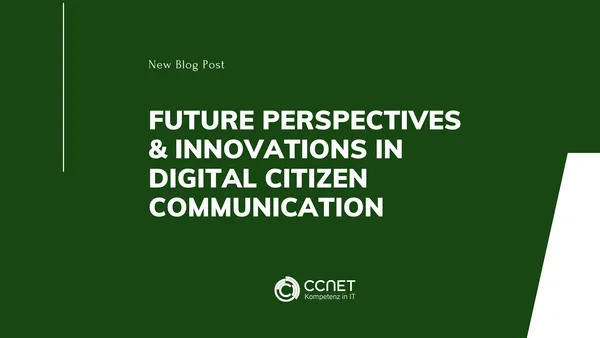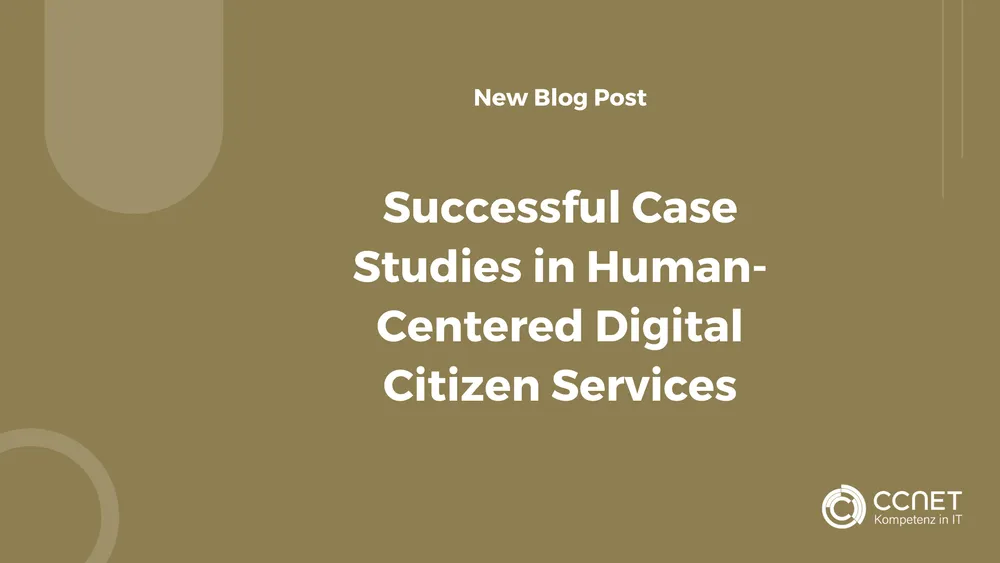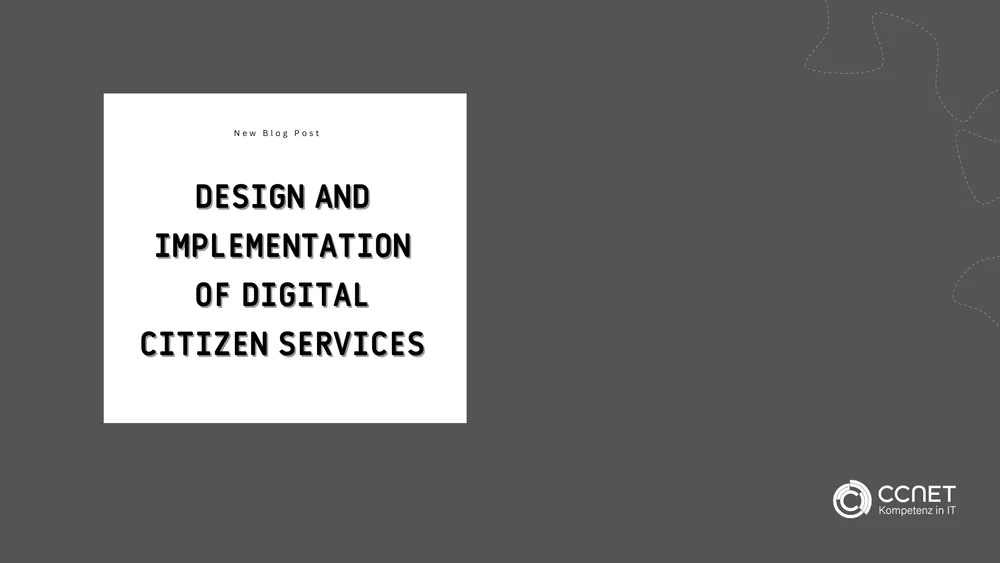
CCNet
Jun 14, 2024 • 3 min read

Future Perspectives and Innovations in Digital Citizen Communication
The future of digital communication and citizen services holds enormous potential for making our lives more efficient and inclusive. In this sixth part of our series on Human-Centered Design (HCD) for digital services and citizen communication, we focus on future perspectives and innovations that are shaping this industry. We examine trends, technologies, and the growing role of artificial intelligence (AI) in designing more user-friendly and inclusive digital services.
Further information can be found here: AI-Consulting
The Role of Innovation in Human-Centered Design
Innovation is a key concept in Human-Centered Design. In the context of digital citizen services, innovation means using new technologies and approaches to create solutions tailored to the needs of citizens. While technology plays an important role, it should not be the sole focus of the design process. The emphasis must always be on the people and their needs.
Future Perspectives in Digital Citizen Communication
The future of digital citizen communication will be influenced by a variety of factors, encompassing both technological and social developments. Here are some of the key trends expected to shape the coming years:
-
Artificial Intelligence and Automation: AI will play an increasingly significant role in digital citizen communication. The use of AI-driven chatbots and automated processes allows citizens to quickly and efficiently access information and services. This automation can reduce the workload for human employees while enhancing the efficiency and quality of services.
-
Personalization and Context Awareness: Technology will enable digital citizen services to be more tailored to the individual needs of citizens. Through context awareness and personalization, citizens can receive the information and services they need, when and where they need them.
-
Multiplatform Integration: Digital citizen services will increasingly be available across various platforms, including smartphones, tablets, and wearables. This integration allows citizens to access their services from anywhere and rely on a seamless user experience.
-
Augmented Reality (AR) and Virtual Reality (VR): AR and VR are expected to have a greater impact on digital citizen communication. These technologies can be used to present complex information in a visually engaging manner or guide citizens through interactive experiences.
-
Data Security and Privacy: Given the increasing digitization, the protection of personal data and the safeguarding of privacy will play a crucial role. Innovative approaches in Human-Centered Design must consider these aspects to maintain citizens' trust.
Innovative Approaches in Human-Centered Design
Innovation in Human-Centered Design involves not only the use of new technologies but also the application of creative approaches to make digital citizen services more inclusive and user-friendly. Here are some innovative approaches gaining prominence in digital citizen communication:
-
Co-Creation and Citizen Participation: Involving citizens in the design process is a crucial aspect of HCD. Through co-creation and participatory workshops, citizens can actively participate in the design process and ensure that their needs are considered.
-
Design Thinking: This approach promotes a collaborative and iterative design culture in which multidisciplinary teams work together to create solutions. Design Thinking allows designers to solve complex problems and develop innovative solutions.
-
User Journey Mapping: This technique helps designers visualize the entire path a user takes through a digital service and identify potential hurdles or problems. This allows for targeted adjustments and improvements in the user experience.
-
Testing and Evaluation: Iterative testing and evaluation are other innovative approaches in HCD. Through regular usability testing and user feedback, designers can continually make improvements and ensure that digital citizen services remain user-friendly.
Conclusion
The future perspectives and innovations in digital citizen communication are exciting and promising. Developments in technology and Human-Centered Design allow for digital citizen services to be more efficient, user-friendly, and inclusive. Innovations like AI, personalization, and multiplatform integration offer new possibilities, while data security and privacy must remain at the forefront.
Human-Centered Design will play a crucial role in shaping this future, ensuring that people are at the heart of all digital innovations. Co-creation, Design Thinking, and iterative testing are innovative approaches that enable designers to create digital citizen services that meet the demands of modern society.


